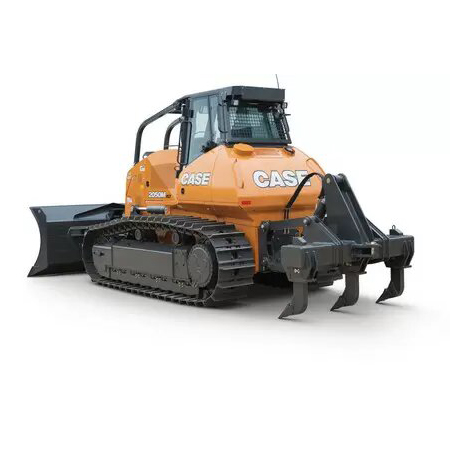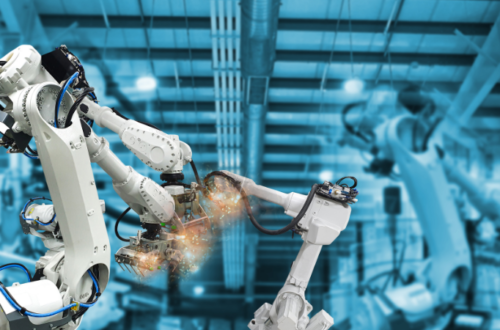Clearing and levelling of land is a fundamental part of any construction project, which is what makes bulldozers so important to the construction process. They have a large, flat blade that can be angled and lowered to clear, push, grade, slope and backfill the ground.
This article will take a detailed look at the bulldozer’s fundamental components, its uses, its various types and how to choose the most appropriate bulldozer for projects. The goal here is to create a comprehensive picture of bulldozers for those unfamiliar with them.
The Bulldozer’s Anatomy
Bulldozers are designed for moving around heavy materials and clearing space. Their components are detailed below.
Blade
The blade, a large metal plate attached to the front, is the main characteristic of a dozer. Depending on the type of dozer, its blade can push materials, level the ground, and carry raw cargo supplies. The blade is also adjustable, able to be positioned and angled in many directions.
Tractor
This central hub of bulldozer machines contains the drivetrain, the main controls and the cab where the driver sits. Modern bulldozers offer air conditioning and other amenities to make the dozer more comfortable.
Tracks
Bulldozers have tracks instead of wheels to spread their weight evenly and help them effectively navigate over harsh and slippery terrains. Their main goal is to provide traction and stability. Most bulldozer tracks are built with metal, but some are made of rubber to put less stress on more sensitive ground materials like concrete and asphalt.
Arms
The bulldozer has two types of arms that connect the blade to the tractor frame. The push arms connect the main tractor to the blade, while the pitch arms connect diagonally between the push arms and the blade to control the blade’s tilt, help push materials and stabilise the push arms by offsetting some of the pressure put on the push arms when moving materials around.
Ripper
A ripper is an optional attachment that is fastened to the bulldozer’s rear. It is a large shank with claws that is either installed as one piece or as multiple hooks depending on the needs of the project. Rippers are commonly used to loosen up hard soil and rocks before the blade can move them.
Applications of Bulldozers
Bulldozers are primarily used for shallow digging, ditching and rough grading the ground, short-range transportation of materials, spreading soil that is dumped by trucks, cleaning, levelling the area around loading equipment, and removing large objects like trees, stumps and rocks from the project parameter.
These tasks are all carried out throughout the duration of projects, putting bulldozers on the forefront of any construction strategy. While they are singularly functional, their versatility comes from the wide spectrum of projects that require their use. From mining to landscaping to building residential and commercial buildings, all projects need clear ground to start, which is where bulldozers become essential.
Types of Bulldozers
There are several types of bulldozers with varying shapes, sizes and weights to account for a wide spectrum of uses over the course of a project. Choosing which bulldozer one needs for a project will depend on many factors like the nature of the project, the terrain among others. There are 6 broad categories of bulldozers, which are listed below.
Crawlers
The crawler bulldozer, or track bulldozer, is characterised by a large, heavy blade and tracks. The tracks give the crawler dozer traction which allows them to traverse flat lands with rough, irregular terrains efficiently and with little resistance. The large blade is designed to push heavy materials like trees, debris and large rocks. Bigger crawler dozers also come with rippers to break up materials on the ground before the blade pushes them. The CASE dozer line offers crawlers with and without rippers for worksites of all types.
Wheel Bulldozers
Also called tyre bulldozers, these are characterised by their wheels that make them easier to handle than crawlers. The wheels operate on a smaller axis to give the bulldozer more manoeuvrability around tighter spots. A wheel bulldozer is ideally suited for soft, sensitive ground due to their wheels being gentler than crawler tracks.
Mulcher Bulldozers
Mulcher dozers are specifically designed for clearing land of vegetation. Their mulching attachments clear trees, brush and shrubbery and act as compaction machines, grinding vegetation into smaller pieces. They are mostly used for residential and commercial building projects where vegetation needs to be cleared for construction to begin.
Shiphold Bulldozers
Unlike a construction bulldozer, a shiphold bulldozer is used to load and unload raw materials transported in bulk via transport ships. They are smaller than their other counterparts for easy handling, and are built using rust-resistant materials so that they can perform in maritime worksites like commercial ports.
Hybrid Bulldozers
Meant for worksites where carbon emissions and fuel consumption can potentially become a problem, hybrid bulldozers combine a traditional diesel engine with electric components to reduce their emissions and fuel usage. They are best suited for mining worksites, landfills and industrial construction projects where the chances of environmental pollution are high.
Mini Bulldozers
For smaller projects that don’t require large-scale machinery, a mini bulldozer is most useful. Its smaller size affords it more speed, greater handling capacity and more versatility. It is generally used in small worksites like driveways and for clearing snow and other softer materials from lots.
Choosing the Right Bulldozer
Different worksites have their own unique challenges and demands. Selecting the right equipment will save time as well as money. The bulldozer price and type will be determined by various worksite factors.
Quality
Make sure to source durable and well-made bulldozers made by reputable manufacturers using high-quality materials. CASE is among the best construction equipment companies in India, producing a line of dozers of exceptional quality and solid long-term usability.
Pushing or Levelling
Determine whether the worksite ground only needs levelling, or whether the project requires a crawler or a wheel dozer to clear materials as well.
Terrain and Materials
The roughness or softness of the terrain will either require a crawler with tracks or a wheel dozer with rubber tyres for gentler handling. Additionally, the type of material that needs to be cleared from the site will also dictate the type of blade that will be used by the dozer.
Worksite Nature
Smaller sites with tight corners will be best suited for mini dozers, while larger projects will require bigger dozers like crawlers or wheel dozers. Other worksites like ports will only require transporting raw material over short distances, requiring shipload dozers.
Environmental Impact
Mines, landfills and industrial sites emit large amounts of carbon dioxide into the air and demand extensive fuel consumption from construction equipment. Hybrid dozers are the best choice for such sites because they reduce carbon emissions and need less fuel to function than traditional diesel-powered bulldozers.
Conclusion
Bulldozers are a fundamental part of construction from the very beginning of a project till the end. The success of any project depends on effectively using the right equipment for the task, which is why project managers should familiarise themselves with the various types of bulldozers and in what context each type of dozer will be most useful to the project.





